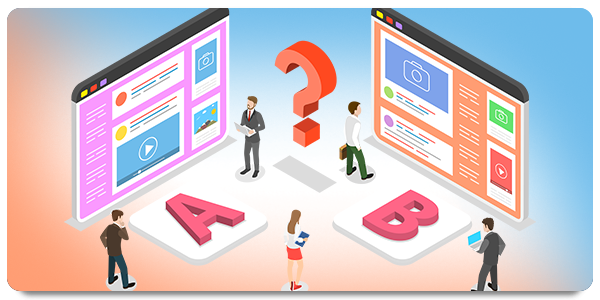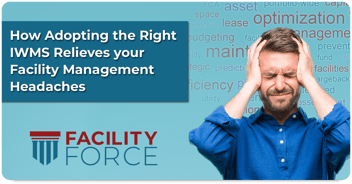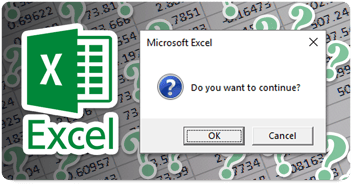I hate shopping for new enterprise software. Hot-take, I know… but dedicating the necessary days, sometimes months, of research is simply a distraction from the work I actually need to get done.
I wish there was a shortcut that delivered the right software, at the right price, with the right functionality. And while I don’t think I’m in the minority with this opinion, I realize the process of shopping for new software is crucial to an organization’s success.
If you are reading this blog, it stands to reason you are shopping for a new asset management software solution. So let’s take a look at some of the pros and cons of Enterprise Asset Management software (EAM).
Table of Contents:
What is EAM Software?
Enterprise Asset Management software (EAM) is a type of asset management software system that helps organizations manage and maintain their physical assets. These assets can include equipment, machinery, vehicles, buildings, and other types of assets that are critical to the organization's operations.
EAM software provides a central repository for asset data, including maintenance schedules, work orders, inventory levels, and asset performance history. This data can be used to track the lifecycle of an asset, schedule preventive maintenance and repairs, optimize asset performance, and make informed decisions about asset investments and retirements.
EAM software typically includes features such as asset tracking, work order management, preventive maintenance scheduling, inventory management, and reporting and analytics.
Some EAM software may also integrate with other enterprise systems, such as financial and procurement systems, to provide a more comprehensive view of asset management and to enable more efficient and effective decision-making.
Enterprise Asset Management Software (EAM) Benefits:
There are several benefits of using Enterprise Asset Management software (EAM) for organizations. Here are some of the key advantages:
- Improved Asset Performance: EAM software provides real-time data on the condition, performance, and maintenance needs of an organization's assets. This helps organizations identify potential issues early, perform proactive maintenance, and optimize asset performance, leading to improved asset uptime and longevity.
- Increased Efficiency: EAM software enables organizations to streamline their maintenance processes, automate manual tasks, and reduce paperwork. This can help improve the efficiency of maintenance operations, reduce downtime, and increase productivity.
- Better Cost Control: By tracking asset performance and maintenance activities, EAM software can help organizations identify cost-saving opportunities, optimize maintenance schedules, and extend the life of their assets. This can help reduce maintenance costs, minimize downtime, and improve overall financial performance.
- Regulatory Compliance: EAM software can help organizations ensure compliance with regulatory requirements and industry standards by tracking and reporting on asset performance and maintenance activities.
- Improved Decision-Making: EAM software provides real-time data and analytics, enabling organizations to make informed decisions about asset investments, retirements, and replacement. This can help organizations maximize the value of their assets and improve overall business performance.
Enterprise Asset Management Software (EAM) Drawbacks:
Enterprise Asset Management software (EAM), like any technology, has its potential drawbacks and limitations. Here are some of the potential challenges organizations may face when implementing EAM software:
- Limiting: EAM software is only focused on managing and maintaining your physical assets. Typically, this is only one aspect of facility manager’s many responsibilities. To efficiently manage the entire workplace environment, including facilities, real estate, and the workforce – an Integrated Workplace Management Software (IWMS) is a more comprehensive solution.
- Complexity: Some EAM software can be complex to set up and configure, particularly if the organization has a large number of assets, or if the software needs to be integrated with other enterprise systems. This can result in a longer implementation timeline, higher consulting costs, and more training requirements.
- User Adoption: EAM software may be difficult for some users to adopt, particularly if they are used to traditional paper-based or manual processes. This can result in lower user adoption rates and a lack of engagement with the software.
- Data Quality: Software is only as good as the data that is entered into it. If asset data is incomplete, inaccurate, or outdated, it can result in incorrect maintenance schedules, inefficient processes, and inaccurate reporting.
What is an IWMS?
In addition to Enterprise Asset Management (EAM) software, Integrated Workplace Management System (IWMS) software emerges as a comprehensive solution for organizations grappling with multifaceted facility management challenges. IWMS software transcends the boundaries of traditional asset management, offering a unified platform to streamline various aspects of facility management, real estate optimization, and workforce productivity.
Understanding IWMS Software:
IWMS software serves as a centralized hub for managing the entire workplace environment, encompassing facilities, real estate, and workforce management. By integrating diverse functionalities into a single platform, IWMS software empowers organizations to optimize resource utilization, enhance operational efficiency, and drive better decision-making across the organization.
Key Features of IWMS Software:
-
Property and Lease Management: IWMS software facilitates comprehensive property and lease management, enabling organizations to track lease agreements, rental payments, and property-related expenses. By providing visibility into lease terms, expiration dates, and occupancy rates, IWMS solutions empower organizations to maximize the value of their real estate assets.
-
Space Optimization: IWMS software offers advanced space optimization capabilities, allowing organizations to analyze space utilization, occupancy rates, and workplace trends. By optimizing space allocation and configuration, IWMS solutions help organizations reduce real estate costs, improve workplace productivity, and enhance employee satisfaction.
-
Work Management: IWMS software streamlines work management processes, enabling organizations to create, assign, and track work orders seamlessly. By automating routine maintenance tasks, IWMS solutions minimize downtime, reduce operational disruptions, and enhance overall facility performance.
-
Capital Improvement: IWMS software supports capital improvement initiatives by providing comprehensive project management capabilities, including budgeting, scheduling, and resource allocation. By facilitating collaboration among project stakeholders and streamlining project workflows, IWMS solutions ensure timely and cost-effective project delivery.
-
Energy and Sustainability Management: IWMS software integrates energy management and sustainability initiatives into facility management processes, enabling organizations to monitor energy consumption, identify efficiency opportunities, and track environmental performance metrics. By promoting eco-friendly practices and reducing energy costs, IWMS solutions support organizations in achieving their sustainability goals.
Harnessing the Power of IWMS Software:
In today's dynamic business environment, organizations require a robust and flexible solution to manage their diverse facility management needs. IWMS software emerges as a strategic asset for organizations seeking to optimize their workplace environment, enhance operational efficiency, and drive sustainable growth. By leveraging the capabilities of IWMS software, organizations can unlock new opportunities for innovation, collaboration, and success in an ever-evolving marketplace.
Choosing Between EAM or IWMS?
Whether you need EAM (Enterprise Asset Management Software) or IWMS (Integrated Workplace Management System Software) depends on the specific needs and requirements of your organization. Here are some factors to consider:- If your organization... manages and maintains a large number of physical assets such as equipment, machinery, and buildings, and does not need to manage capital projects, space management, or energy management, then an EAM system may be more suitable for your needs.
- If your organization... manages and maintains a large portfolio of properties, leases, and facilities, and needs an enterprise solution to manage them efficiently. Additional workplace functionality is needed, including Property & Assets, Space Management, Work Management, Capital Improvement, and Energy & Utility Chargebacks, then an IWMS system may be more suitable.
Ultimately, the decision to choose EAM or IWMS should be based on a careful analysis of your organization's specific needs, priorities, and goals. It's important to consult with relevant stakeholders and experts to make an informed decision.
Related Resources:
- FacilityForce's IWMS Solution
- Facilities Management Overview
- What is the Best IWMS Software for Government?
- The State of Alaska Tackles Statewide Deferred Maintenance
- Why Capital Budgeting Software is Critical in Government Facilities
- Three Keys to Effective Space Management
- Facilities System Integration




